Are there rivers, lakes and waterfalls in or around Chapala and Ajijic, Mexico?
Thomas Hellyer - Chapala Home Sales
.jpg) Lake Chapala is the largest lake in Mexico, at about 2 to 6 miles wide, and about 70 miles long. Most of the foreigners live on the north shore of the lake.
Lake Chapala is the largest lake in Mexico, at about 2 to 6 miles wide, and about 70 miles long. Most of the foreigners live on the north shore of the lake. Lake Chapala helps regulate the climate in the area, which is commonly referred to as “the lake effect” but it is not like the lake effect in Michigan or in Chicago. In a sense, the lake keeps us a bit cooler in the summer and a bit warmer in the winter.
...
.jpg) Lake Chapala is the largest lake in Mexico, at about 2 to 6 miles wide, and about 70 miles long. Most of the foreigners live on the north shore of the lake.
Lake Chapala is the largest lake in Mexico, at about 2 to 6 miles wide, and about 70 miles long. Most of the foreigners live on the north shore of the lake. Lake Chapala helps regulate the climate in the area, which is commonly referred to as “the lake effect” but it is not like the lake effect in Michigan or in Chicago. In a sense, the lake keeps us a bit cooler in the summer and a bit warmer in the winter.
Lake view properties are certainly desirable and there is a demand for them so the price is a little bit higher for those properties. Lake Chapala is clean. It doesn’t have crystal clear blue waters that you can see through for hundreds of feet because it has a muddy bottom and it is shallow, but it tests clean of bacteria and heavy metals.
There is not a lot of recreational use of the lake at this time. Part of the reason for that is that it is muddy and shallow on the parts that are closest to the shore, but there are people who operate boats and sail on it. There are also a certain number of launching places for the boats and some yacht clubs, too.
We have streams here in Chapala and Ajijic rather than rivers. Rivers are temporary during the summer months when we have our rainy season. We do have some waterfalls that you can hike to, which are about 15 to 20 minute hikes. The rivers that are the main tributaries to the lake are at the far east end and are not something that is a part of our life, good or bad, closer to the west end of the Lake Chapala, where Ajijic and the town of Chapala are located.
Some people swim in Lake Chapala but not very many because it is not an appetizing swimming lake. I grew up on a beautiful lake in Washington State called Lake Chelan, which in the summer months, when it is warm enough, is great for swimming. On the contrary, here at Lake Chapala, you have to walk on shallow and muddy water for a couple of hundred yards before you might even have enough water to swim in, which just isn’t very appealing.
(Lake Chapala, Mexico, pictured.)
Posted January 25, 2016
Jerry Smith, MD
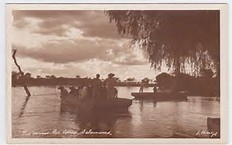 Our home is on the mountainside, but I’m only 6 or 7 blocks from the lakeshore, so I can see the boats out there, which are mostly kayaks.
Our home is on the mountainside, but I’m only 6 or 7 blocks from the lakeshore, so I can see the boats out there, which are mostly kayaks. The Lerma River is the second longest river in Mexico, and it is the river that feeds Lake Chapala. It flows through the breadbasket of Mexico. They have built about 11 dams on that river and the tributaries. They claim it’s the poor farmers that need the water, but it’s...
 Our home is on the mountainside, but I’m only 6 or 7 blocks from the lakeshore, so I can see the boats out there, which are mostly kayaks.
Our home is on the mountainside, but I’m only 6 or 7 blocks from the lakeshore, so I can see the boats out there, which are mostly kayaks. The Lerma River is the second longest river in Mexico, and it is the river that feeds Lake Chapala. It flows through the breadbasket of Mexico. They have built about 11 dams on that river and the tributaries. They claim it’s the poor farmers that need the water, but it’s actually big agri-business, in my opinion. There’s no inflow into the lake until all of the dams upstream have filled, and then they release and generously give us everything they don’t need. As a result, our lake is down about 10 feet from what it should be, and it hasn’t been up to the maximum level since well before I came.
At the turn of the century, the lake was down so low that the beach was a half mile wide; you had to walk forever to get out to the water. It’s really sad. Now it’s back up to the shoreline but the water is not deep.
Lake Chapala used to be polluted with sewage, but we now have sewage treatment plants all around the lake, and the lake is safe for swimming.
Lots of people hike the mountain trails, and in the rainy season there are several small waterfalls to visit.
(Rio Lerma in the 1900's, Mexico, pictured.)
Posted July 5, 2016
Michael Kavanaugh - Continental Realty
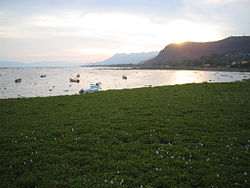 Lake Chapala is not generally used for recreation. Local fishermen fish on it, it’s beautiful to look at, and it moderates the temperature.
Lake Chapala is not generally used for recreation. Local fishermen fish on it, it’s beautiful to look at, and it moderates the temperature. Here’s why Lake Chapala is not used more recreationally. In late 90’s, early 2000’s, when the water level in Lake Chapala dropped because of a drought, farmers built fences and grazed their cattle out there, some of the caddies at the local golf course built a golf course and they even did...
 Lake Chapala is not generally used for recreation. Local fishermen fish on it, it’s beautiful to look at, and it moderates the temperature.
Lake Chapala is not generally used for recreation. Local fishermen fish on it, it’s beautiful to look at, and it moderates the temperature. Here’s why Lake Chapala is not used more recreationally. In late 90’s, early 2000’s, when the water level in Lake Chapala dropped because of a drought, farmers built fences and grazed their cattle out there, some of the caddies at the local golf course built a golf course and they even did a dirt bike track. When the water came back, they never took down any of those fences and it’s extremely dangerous out there. I would not be out there on a jet ski. Another issue is there are lirio plants, which is like the water hyacinth, that grows somewhat, which can be somewhat treacherous if you’re waterskiing. Your skis could get caught in it. The other reason that lake is not used recreationally is the way the fishermen fish. They run long gill nets that are marked with floating milk bottles. You see sailboats out there occasionally and very rarely you will see a powerboat, but if you do see a powerboat it’s way in the middle of the lake where it’s safer. But even getting out to the middle of the lake from a boat launch, you have to kind of know where you’re going in order to avoid any problems with nets or other hazards.
(Lirio plants floating on Lake Chapala, Mexico, pictured.)
Posted August 22, 2016
Richard Tingen - Coldwell Banker Chapala Realty
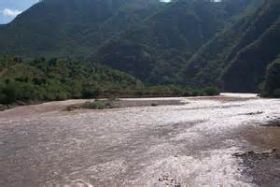 The largest lake in Mexico is Chapala. There are tributary rivers that run off the mountains. They’re not big gushing rivers but we do have a fairly interesting river system in the state of Jalisco.
The largest lake in Mexico is Chapala. There are tributary rivers that run off the mountains. They’re not big gushing rivers but we do have a fairly interesting river system in the state of Jalisco. There are probably three of four major rivers and they don’t flow all year round. They’re very active in the rainy season. As far as waterfalls, we have a couple of waterfalls in the area. We have one right up here in the mountains in...
 The largest lake in Mexico is Chapala. There are tributary rivers that run off the mountains. They’re not big gushing rivers but we do have a fairly interesting river system in the state of Jalisco.
The largest lake in Mexico is Chapala. There are tributary rivers that run off the mountains. They’re not big gushing rivers but we do have a fairly interesting river system in the state of Jalisco. There are probably three of four major rivers and they don’t flow all year round. They’re very active in the rainy season. As far as waterfalls, we have a couple of waterfalls in the area. We have one right up here in the mountains in Ajijic. If you have enough energy, right after a rain, you can walk up to a small the waterfall right from the village.
(The Río Grande de Santiago flows out of Lake Chapala, pictured.)
Posted August 29, 2016
Magy Carmona - Magy Carmona at Lake Chapala Realty
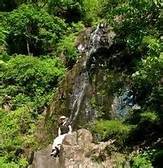 There’s a river in Chapala called the Lerma River, which empties into Lake Chapala. Tours to visit the Lerma River are not available because it begins in Guanajuato, which is another state.
There’s a river in Chapala called the Lerma River, which empties into Lake Chapala. Tours to visit the Lerma River are not available because it begins in Guanajuato, which is another state. In Ajijic, there are small, seasonal waterfalls, specifically on the El Tepalo hills. I had the chance to see a waterfall just here in front of me, so if you pay attention and it rains for days, you may see many places around the hills that have a...
 There’s a river in Chapala called the Lerma River, which empties into Lake Chapala. Tours to visit the Lerma River are not available because it begins in Guanajuato, which is another state.
There’s a river in Chapala called the Lerma River, which empties into Lake Chapala. Tours to visit the Lerma River are not available because it begins in Guanajuato, which is another state. In Ajijic, there are small, seasonal waterfalls, specifically on the El Tepalo hills. I had the chance to see a waterfall just here in front of me, so if you pay attention and it rains for days, you may see many places around the hills that have a small waterfall. There’s also a specific road where you can walk or trek heading to the El Tepalo hills, and you’ll find that in three stages you can visit the waterfall, and even jump in it if you want.
(El Tepalo hills, Ajijic, Mexico, pictured.)
Posted November 27, 2016
Jeff Smith - DocTours
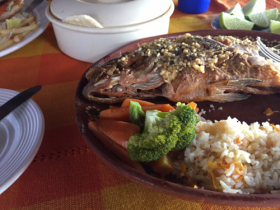 You can find one of each here in the Lake Chapala / Ajijic area. You can't miss the lake, which is the biggest in Mexico. It's the reason for the seashore towns. Locals fish it and take a ferry to the other side. Vacationers only rarely utilize it. A big party boat would take out groups on excursions, but I've not seen it on the lake in a while.
You can find one of each here in the Lake Chapala / Ajijic area. You can't miss the lake, which is the biggest in Mexico. It's the reason for the seashore towns. Locals fish it and take a ferry to the other side. Vacationers only rarely utilize it. A big party boat would take out groups on excursions, but I've not seen it on the lake in a while. Lake Chapala is fed by a river, Lerna, that industry used but now they're not supposed to and may not be...
 You can find one of each here in the Lake Chapala / Ajijic area. You can't miss the lake, which is the biggest in Mexico. It's the reason for the seashore towns. Locals fish it and take a ferry to the other side. Vacationers only rarely utilize it. A big party boat would take out groups on excursions, but I've not seen it on the lake in a while.
You can find one of each here in the Lake Chapala / Ajijic area. You can't miss the lake, which is the biggest in Mexico. It's the reason for the seashore towns. Locals fish it and take a ferry to the other side. Vacationers only rarely utilize it. A big party boat would take out groups on excursions, but I've not seen it on the lake in a while. Lake Chapala is fed by a river, Lerna, that industry used but now they're not supposed to and may not be doing any more dumping. It's hard to be certain. But Harvard researchers proclaimed fish caught in the lake safe. The other end of the lake also has a river whose water eventually flows into the Pacific. In the wet season, you can hike to waterfalls.
(Fish dinner, Lake Chapala, Mexico, pictured.)
Posted February 13, 2017
Roberto Millan - Roberto Millan Design and Construction
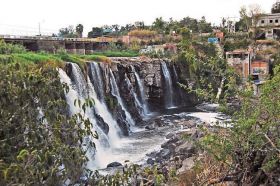 We have waterfalls in or around Chapala and Ajijic, but this is only during the rainy season.
We have waterfalls in or around Chapala and Ajijic, but this is only during the rainy season. The Lakeside area, including Chapala and Ajijic, has the biggest lake in Mexico. During the dry season, the lake loses water and the edge recedes. Come the rainy season, the edge expands again. Some time about 15 years ago, the edge of the lake was about 500 meters farther away from where it is now because we had many years of drought. That was a problem during...
 We have waterfalls in or around Chapala and Ajijic, but this is only during the rainy season.
We have waterfalls in or around Chapala and Ajijic, but this is only during the rainy season. The Lakeside area, including Chapala and Ajijic, has the biggest lake in Mexico. During the dry season, the lake loses water and the edge recedes. Come the rainy season, the edge expands again. Some time about 15 years ago, the edge of the lake was about 500 meters farther away from where it is now because we had many years of drought. That was a problem during that time because the lake supplies water to Guadalajara and the locals had some water supply shortage.
There is a big river, Rio Lerma, that is the main source of water to the lake and this river comes from the Mexico states of, Michoacán, Jalisco, and Guanajuato. It's a big river, but it brings in a lot of pollution because it crosses many industrial areas. The river Santiago on the other hand drains the lake.
Some activities that you can do in the lake are fishing, kayaking, and water skiing; but I wouldn't go swimming in the lake because the bottom is muddy and the water is not so clean.
(Rio Santiago in El Salto, Jalisco, Mexico,pictured.)
Posted May 23, 2017



.png)